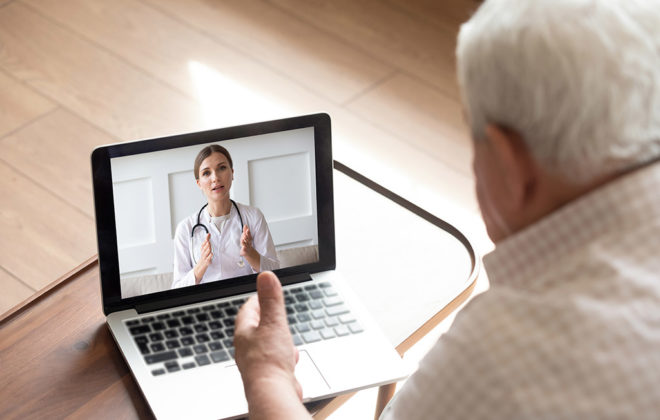What Will Telehealth Look Like After Covid?
Telehealth has transformed how we look at healthcare and going to the doctor; especially during this pandemic. But, what will it look like when COVID is over?
The internet has changed the world: it’s vague but true. Thanks to the development of the internet, healthcare and medicine have changed in a way no one could have known. Add COVID-19 on top of that, and the world of telehealth has expanded.
Telehealth is a more convenient way to give healthcare to people with a disability or people living in rural areas. As the world moves forward to a post-COVID world, there are still many questions about how telehealth will evolve.
Based on the advances made in telehealth during the pandemic, there is a lot more to consider about the future of telehealth. Still not sure? The information below might help as you begin to think about whether telehealth could be right for you.
Continued Convenience After COVID?
Current studies are looking at how effective it is to have telehealth services for individuals with disabilities in remote areas. After COVID, it is likely that online doctors and telephone doctors will continue to expand. They may even operate in a similar way like they do now.
Instead of driving long distances to see your doctors or specialists, it will likely remain possible to receive care via online doctors or over the phone. This saves time and energy.
A Lift on Geographic Restrictions for Telehealth?
It is not as simple as having specific geographic restrictions for healthcare lifted. The exact regulations for telehealth during the pandemic itself are unclear and, at times, nonexistent.
This isn’t good or bad. After COVID, it is possible that telehealth will become more normalized. Regulations will then be clearer about virtual healthcare and telemedicine. As a whole, telehealth still needs more observation and research. Some advantages and disadvantages are still unknown.
Still not sure how telehealth works now? Learn a little more about us while you’re wondering what the future of telehealth will hold.
New Communication Between Patient and Doctor
There are several advantages to using online patient portals for communication between patients and doctors. That said, there are clear disadvantages needing further discussion too.
Communicating on online portals brings forth questions of patient privacy and safety. Doctors are liable for their patients’ care and well-being: how is a patient’s safety affected using telehealth? Is their privacy on an online server guaranteed as well?
There must be more oversight when using telehealth to understand the pros and cons of making it widely available post-COVID. These are all important considerations.
On a more positive note, there is newfound ease in communicating with your doctors. Patient portals also make it easier for doctors to contact other specialists about your condition. Staying connected outside of physical visits might help answer your health questions and concerns.
Managing Your Own Healthcare
Not only do telehealth services allow you to manage your own healthcare, but it gives you the opportunity to do so while staying at home. You can stop waiting in long lines and stop driving a long way to reach your nearest healthcare facility. Everything you need could happen at home by using telehealth services.
It gives you more freedom to take charge of your own health and well-being. Not only that, but if you live in a more rural or isolated area, it’s more convenient to seek virtual appointments from your home. This saves you travel time to get to your nearest doctor’s office or hospital.
That’s Right: Virtual
COVID-19 has made many hospitals shut their doors for good. Hospital closings have made it difficult for patients with disabilities, isolated patients, or patients in rural areas to find proper care. Hospital beds are also pushed to the brim with COVID-19 patients.
By using telehealth during the pandemic, doctors have been able to provide care to those needing intense treatment. It is also easier for them and patients to have small check-ups from the comfort of home. The question here is often, Am I still getting the same quality level of treatment that I was going to an actual doctor’s office or hospital?
It does depend. In the current COVID telehealth model, it might look like this: a nurse comes to your house once or several times a day to change your IV, perform check-ups, and more. An in-person nurse helps with the more practical parts of your appointment. Then you can telecommunicate with a doctor about your condition and progress.
Keep up With Routine Treatment
Since everything is done remotely, patients who need routine treatment or check-ups can now do it from home. Even when the COVID-19 pandemic subsides, there will still be the comfort of home appointments and treatments. No more long lines and no more waiting!
Of course, for mandatory procedures and some check-ups, it may be necessary to go in-person to see your doctor or specialist. Despite this, no one can ignore the advantages of telehealth in helping patients keep up with routine treatment or check-ups.
Telehealth Will Continue to Change Healthcare
There is still much to explore with telehealth. The COVID-19 pandemic has altered the way health can be treated worldwide. Patients can rest a little easier, knowing that telehealth is an option.
There are even more discoveries waiting to be realized about the benefits of telehealth for patients. As COVID-19 dies out, telehealth won’t. Online doctors can continue to meet patients’ needs in new and innovative ways.
The world can continue growing its healthcare to truly be convenient for all people. Take a look at our blog for more insight into the growing telehealth market.




